Sagrada Familia (Barcelona) - tickets, sightseeing, interesting facts
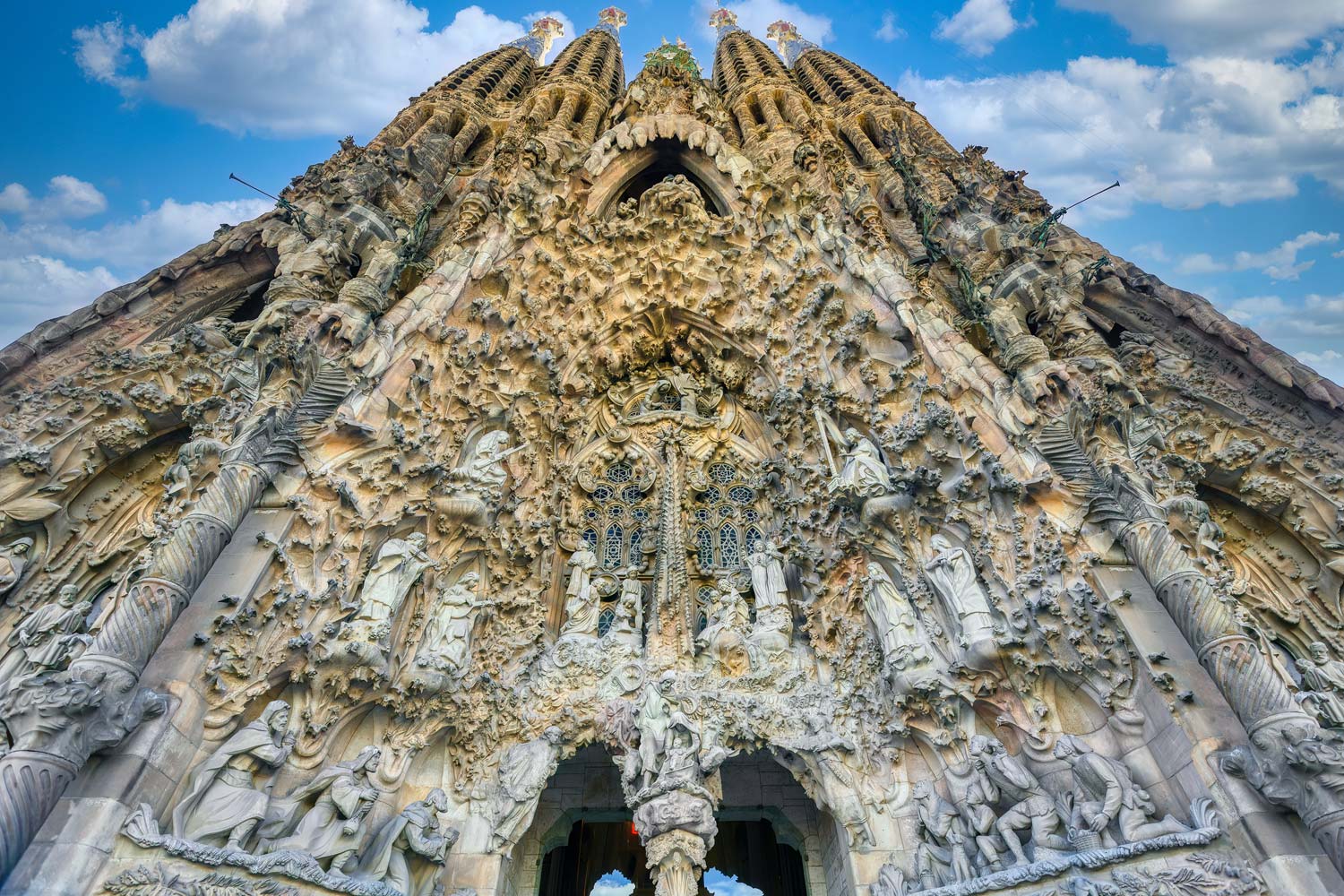
photo by Ian Kelsall
I will start this post a bit unusual. I know that a lot of people are mainly looking for information about purchasing admission tickets, so let me start with a set of useful information on this topic.
Interesting information and curiosities about the church itself and Antoni Gaudi, as well as other organizational information, can be found in the further part of the post.
If you are looking for a good guide with maps of attractions in Barcelona, read this guide: Barcelona - sightseeing plan - map, tickets, attractions, monuments, accommodation, interesting facts
Tickets to the Sagrada Familia
First things first, what is most important for those who want to visit the Sagrada Familia church.
I have been here several times (in summer and winter as well) and it never happened that there was no queue at the ticket offices. Even in winter (in the middle of February) I had to stand for over an hour. In the summer, it happened to me that I gave up on entry, because the gigantic queues for tickets took away my desire. So it was with great relief and joy that I started selling tickets via the Internet. Skip-the-line purchase for a specific day and time, and then entering without unnecessary waiting is, in my opinion, the only sensible choice today. So it only remains for me to share link to sell tickets to Sagrada Familia - [click].
Recently, the ticket distributor even launched the possibility of a live view of the current availability of tickets. The preview is available in the form of a transparent calendar. Of course, I present the calendar with the availability of tickets below.
.
Choose the day you are interested in and then click "Book now". Clicking will take you to the booking page, where you can select the specific time of entry, number of tickets, possible discounts and price reductions (if available), etc.
Brilliant thing! You can check whether the tickets for the date you are interested in are still available on your phone at any time.
Reservations and tickets are made available two months in advance. For fear of being bought by speculators, they are not sold in advance. You can return a ticket purchased online at least 24 hours before the date of entry and you will receive a 100% refund of the ticket value.
Sagrada Familia - opening hours
The church is open 7 days a week, all year round, from 9.00 am to 18.00 pm.
From April to September, opening hours are extended to 20.00.
This is probably all when it comes to basic organizational matters.
However, before you choose to visit the church, read the rest of the text. You will find a lot of interesting information about him!
Unauthorized construction
It was 2018. 136 years have passed since the start of construction of the Sagrada Familia, and the end of construction was still not in sight. The church has irreversibly become part of the city's landscape and has become even the most frequently visited attraction in Barcelona, when suddenly the world was informed that the Sagrada Familia did not have a building permit !!!
The tomato soup spoon I was eating stopped halfway between the plate and my mouth and hung until the end of the message. For a while, I basically forgot that I was eating a soup! I listened to the journalist's words about the illegal construction in amazement.
So what? For over 130 years they are building one of the largest and most famous churches in the world without a building permit?
I followed the matter with interest. It turned out that the permit was issued by the municipal authorities of Sant Marti de Provenals, which at the time the construction started was the competent authority to issue such a decision. However, the permit was for a much smaller building. In the meantime, Sant Marti de Provenals became part of Barcelona, and Gaudí's project grew exceptionally strongly and the legally commenced construction became illegal over time.
Less than a year later, in February 2019, the church and city authorities reached an agreement and the appropriate permit was issued. In return, the diocesan curia undertook to pay the city the amount of US $ 41 million within ten years.
In the end, the deal was signed not long after, and the final payment dropped to $ 36 million.
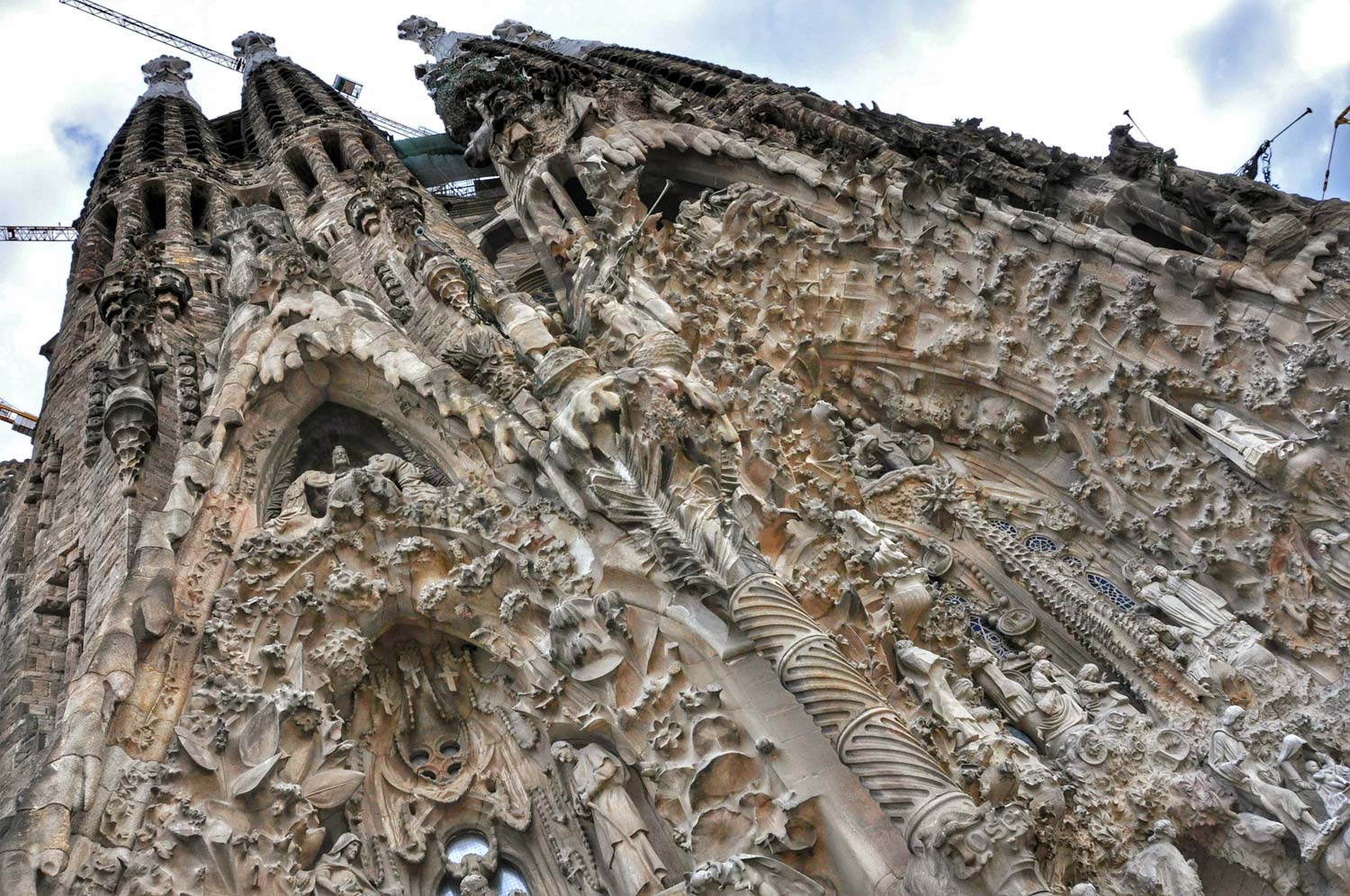
Basilica of Antoni Gaudi
Gaudi was given the task of building the Sagrada Familia by accident. Originally, the order for the design and construction was awarded to the Spanish architect Francisco de Paula del Villar. According to his plans, the church was to have a neo-Gothic character typical of those times. After six years of working on the project and a year after the start of construction, Villar gave up the work he was entrusted with. The immediate cause was the conflict he got into with the architect Joan Martorell - the advisor to the promoter of the church construction.
Joan Martorell himself was offered to continue the construction, but declined the offer. However, he recommended one of his young assistants and assistants: Antonio Gaudi. To the surprise of many, the proposal was accepted, and Gaudi, then 31, became the chief designer and builder of the Sagrada Familia.
During the first years, Gaudi's involvement in the project was low. For he continued to work as an assistant and assistant to Joan Martorell, carrying out other urgent, side assignments for him.
During the first eight years of construction, only a crypt was built, the structure of which was in line with what the first builder, Francisco de Paula del Villar, left behind (it is the only part of the church made according to his design).
As the years went by, Gaudi's involvement in the construction grew. He gradually gave up other jobs to work on the Sagrada Famiilia, and for the last 15 years of his life he lived on a construction site and devoted himself solely to this cause.
He constantly changed, reworked and developed his project. He experimented with forms, materials, created and tested building models, and made endless corrections. He was inspired by nature and shapes derived from nature.
He made countless sketches but never made a complete project. As he himself claimed, in nature the new is a continuation of the old. New forms always grow straight out of the old ones. They create a new quality based on old foundations. Fresh shoots originate from old branches. This is also how he treated his project.
He was well aware that the church would not be completed in his lifetime. By resigning from the detailed design, Gaudi only left the drawings that perfectly illustrated his vision, at the same time giving space for the continuers of the construction. He set himself as the foundation from which a new thought would develop.
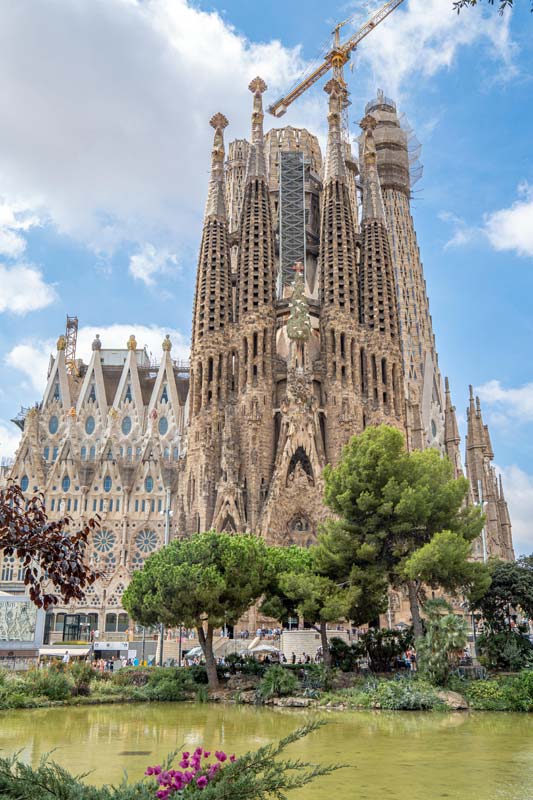
photo by Diego Allen
Antonio Gaudi has dedicated 40 years of his life to the construction of the Sagrada Familia. Looking at and analyzing the shape of the church from a distance, he accidentally fell under a tram. At the scene of the accident, no one recognized him, so he was considered homeless, and with serious injuries, he was taken to a hospital for the poor.
He was not recognized until the next day, but Gaudi, who was already greatly weakened then, refused to be moved to a better place. He was supposed to answer: "This is my place, this is where I want to die." He died three days after the accident, on June 10, 1926.
Gaudi's vision after his death was even more realized than he had assumed. During the Spanish Civil War (1936-1939), Catalan anarchists destroyed most of his designs and drawings. The continuators of his work had to face a task much more difficult than Gaudi himself assumed, and by a twist of fate they were given even more space for it. Fortunately, they did their job perfectly. New elements of the church, which constantly appear on the construction site, fit perfectly into Gaudi's concept, and at the same time bring a new quality. A new branch grew out of the old branch ...
Interesting facts about the Sagrada Familia
It is enough to stand in front of you to immediately feel delight. The building is unique, peculiar and unlike any other temple in the world. It is so original that from the very beginning it aroused controversy even among artists. George Orwell called it "one of the most hideous buildings in the world" and Pablo Picasso thought it was more "an artistic joke in the style of Salvador Dalí".
Today it inspires admiration, attracts 4,5 million tourists every year and has become one of the most famous buildings in the world.
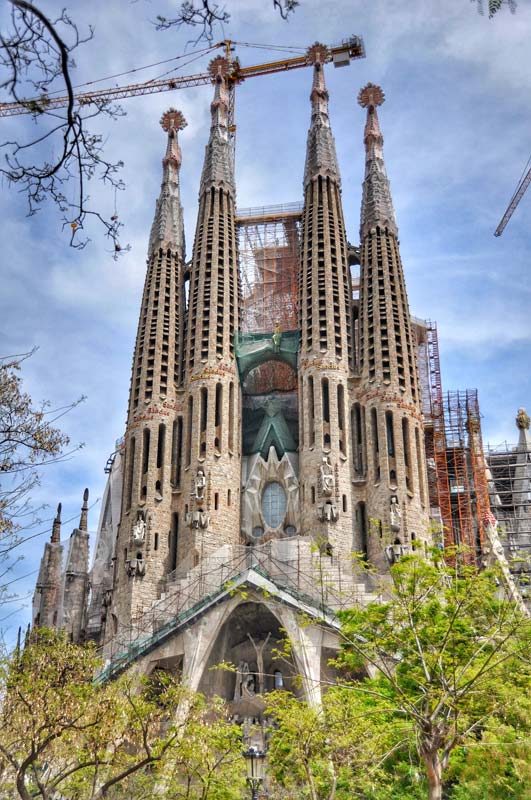
state in 2012
The form of the building
When we observe the building from a comfortable distance from the outside, we do not see the details yet. Our attention is mainly drawn to the shape of the towers. I had the impression that they were inspired by the shape that would arise if we were pouring a narrow stream of liquid mud down a thin string of a doll. The mud flows down the string and forms a higher and higher mud column from below.
Was that the inspiration? Unlikely, but a valuable feature of art is the freedom to read it, so each of us can look for possible sources of inspiration on our own.
So what was Gaudi's main inspiration? You will find the answer at one of the exhibitions inside the church, and if you fail to reach them, take a look below.
It looks a bit like a chandelier, but it's something else entirely.
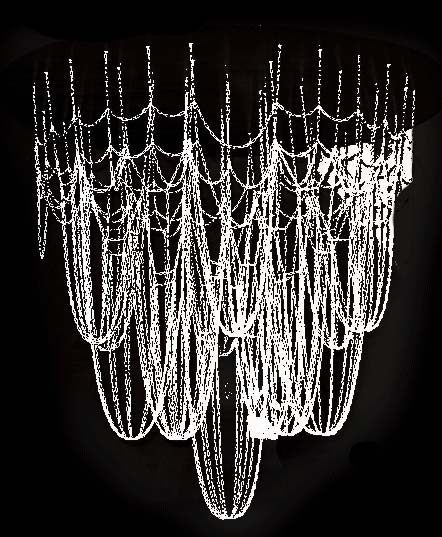
In the picture above you can see the so-called "Gaudi chains". It is nothing more than chains of various lengths attached under a rigid plate, which, while hanging, form natural arches when suspended under the influence of gravity. The photo was taken on display at the Sagrada Familia. I deliberately removed the colors and increased the contrast of the photos to bring out mainly the shape of the chains and remove the unnecessary background.
Now check out the photo below. Reminds you of something?
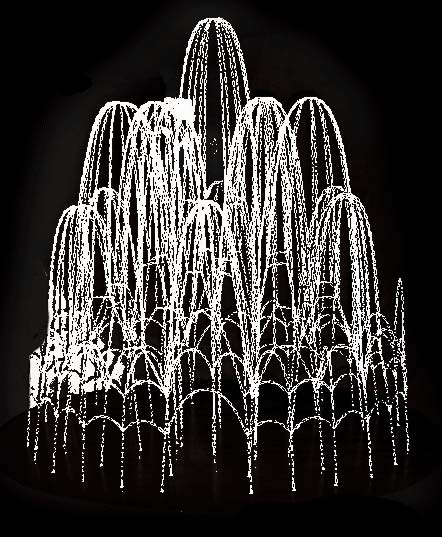
Yes! This is the exact same picture, but reversed by 180 degrees. Does it not remind you of the Sagrada Familia? Exactly!
On display inside the church you will even find a model of the Sagrada Familia made in a chain form!
One more thing, extremely important in Gaudi's concept, follows from the photos above. The artist always avoided right angles whenever it was possible. He rightly claimed that right angles practically do not occur in nature, so there is no reason to use it in architecture.
You will probably come across information somewhere that Gaudi used complex arcs based on elliptical paraboloids, parabolic hyperboloids, ellipsoids or even helicoids…. but then remind yourself that these are just the shapes that free-hanging chains take…. and that's it.
The best ideas were thrown to the artist by nature.
Facades and towers
Gaudi was a deeply religious man. It was not enough for him that (like most churches) the Sagrada Familia would be built on a cross plan. He wanted the symbolism of the church to reach much wider. Today (due to the fact that the church is still under construction), not all elements of this symbolism are visible yet. More than that, the two main elements are still not ready. The church will have 18 towers, of which 12 (four at each of the three facades) symbolize the apostles, 4 (in the central part of the church) are the symbol of the evangelists, 1 (second highest) the Virgin Mary and 1 (highest) Jesus Christ. This is what the tower of Mary and Christ has not yet been completed.
The tallest tower will be 170 meters high and will be 3 meters lower than Barcelona's highest hill, Montjuic. Gaudi believed that no man-made structure in a city should be higher than a natural, God-made mountain.
Facing the church you will find the façade of the building face to face, but the Sagrada Familia does not have a single main façade. He has three of them!
As I mentioned earlier, it was built on a cross plan and there are separate facades on three of the four ends of the arms of the cross. Each of them is dedicated to a different stage in Christ's life, and their names say it all:
- Nativity facade (Fachada del nacimiento) - the only one built during Gaudi's lifetime, it has a definitely joyful character in its pronunciation and the way it is decorated
- Façade of the Passion (Fachada de la Pasión) - has a gloomy eloquence and a very moving character. The sculptures have sharp, austere, geometric shapes that emphasize the weight of the message.
- Glory Facade (Fachada de la Gloria) - the façade is still under construction and is assumed to be sublime and epic. Completing this façade will require the demolition of the residential buildings facing it, and De Mallorca, which now runs in front of it, will run underground, directly below the entrance steps to the church.
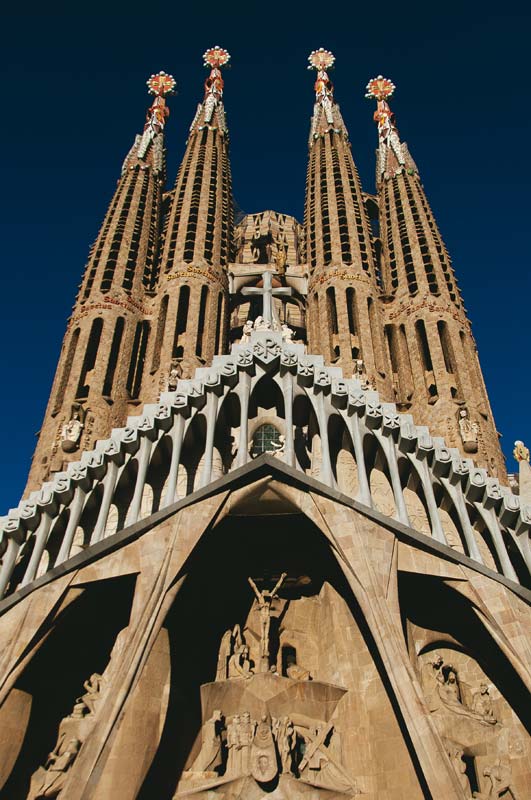
So, to see all the facades, you have to go around the church 🙂 To make it easier, I present below a screenshot from Google Maps, with a three-dimensional photo of the Sagrada Familia and the location of all three facades.
I attach a direct link to the three-dimensional version of the photo on Google maps here - [click]
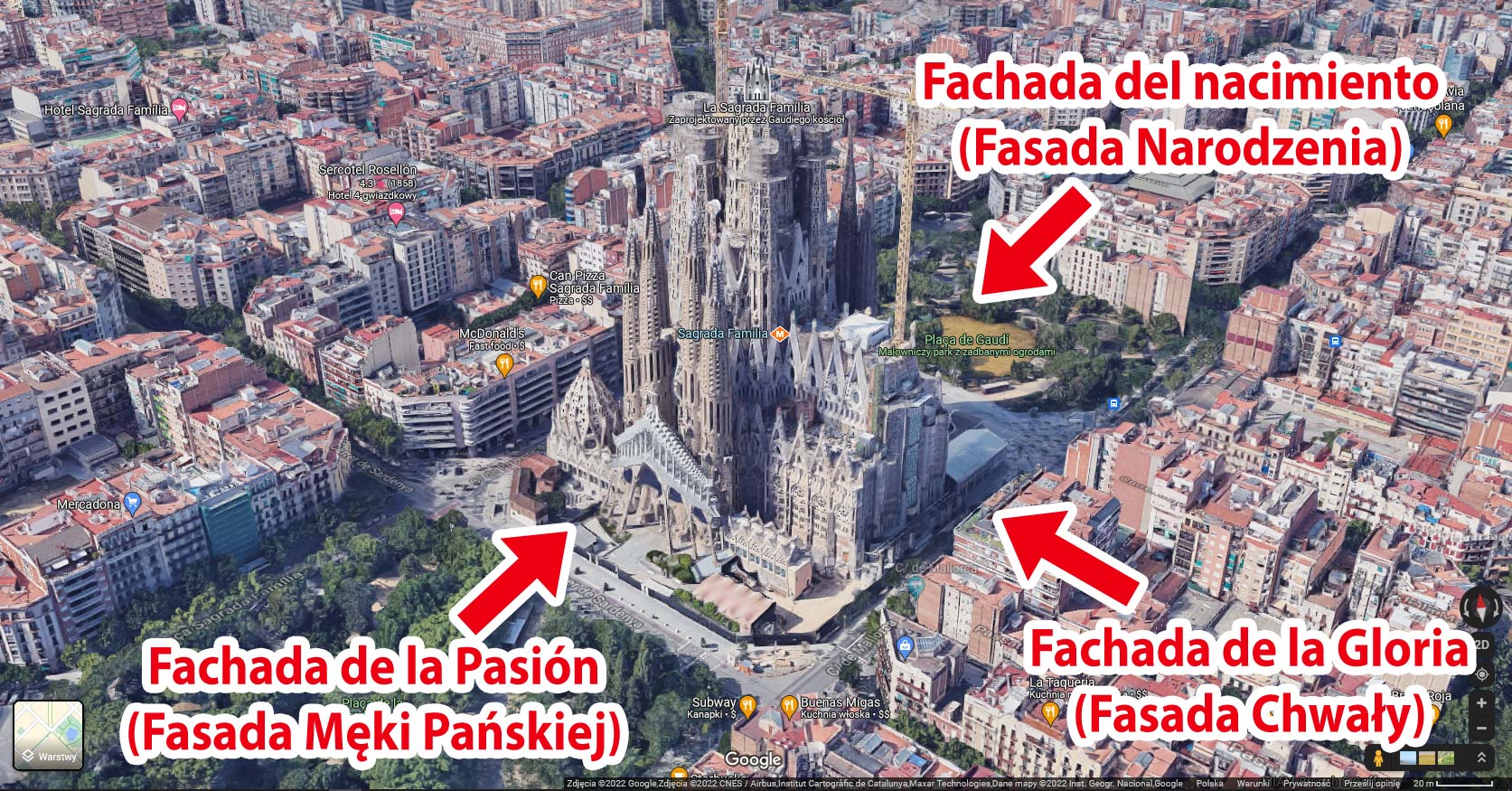
The number 7,5
Another curiosity is Gaudi's attachment to the number 7,5. This number results directly from the analysis of the proportions of the main dimensions of the cathedral. Let's play with numbers for a moment.
The most important dimension in the church is the length of the main nave. The Sagrada Familia is 90m, which is 7,5 x 12. The height of the main nave is 45m, which is 7,5 x 6.
Let us consider the length of the transept, i.e. the transept, which is 60m, i.e. 7,5 x 8. Additionally, the width of the transept is 30m, i.e. 7,5 x 4.
When we look further, we will find the apse height of 75 m, i.e. 7,5 x 10.
The question then arises: why 7,5?
Honestly, I don't know. I started digging a bit, and it seemed natural to me to go towards the biblical symbolism of numbers and their meaning in Christianity. After all, we remember that Gaudi was a deeply religious man, so perhaps he was looking for inspiration here?
My search was partially unsuccessful. The number 7,5 as such is practically nowhere to be found.
The only sensible clue turned out to be the proportions of the human body. With a proper body structure, a person's height is equal 7,5 head heights!
Was that what Gaudi inspired? Did he want to make a symbolic connection between God and man by using the symbols of faith (described by me earlier) in one building with the proportions of the human body? I'm not sure, although it is not excluded.
Looking further, I started to treat the number 7,5 as a combination of two separate digits: 7 and 5.
What came out of it?
Biblical Meaning:
5 - has no assigned meaning
7 - symbolizes: the whole, the fullness of something, bringing something to the end
Significance in Christianity:
5 - is the number of wounds of Christ, and in Catholicism the number of church commandments
7 - first of all, it is the number of days that God needed to create the world and the number considered a symbol of perfection. In Catholicism, we have 7 sacraments, 7 gifts of the Holy Spirit, 7 deadly sins, 7 virtues (3 theological + 4 cardinal), 7 penitential psalms, 7 words of Jesus on the cross and finally a book closed with 7 seals in the Apocalypse of Saint John
Was this symbolism followed by Gaudi? And again, I have to say, I don't know 🙂 It is possible, although the result of my research does not convince me completely. Perhaps you will find something interesting in this matter? Then share your knowledge in the comments under the post.
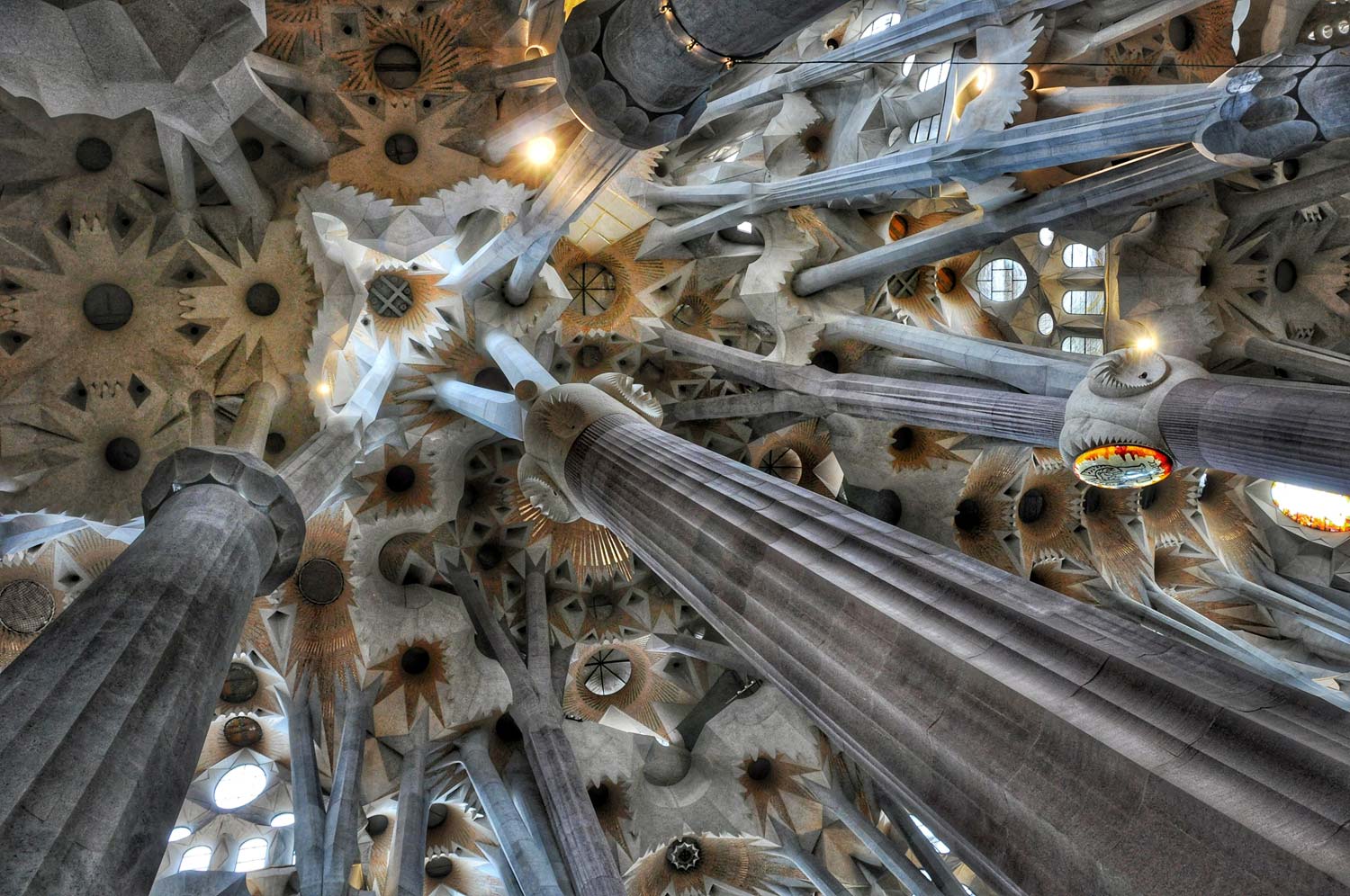
Other nature influences
Finally, I would like to draw your attention to a few details that may make your visit to the Sagrada Familia more pleasant. We know that Gaudi was modeling on nature, in which he looked for perfection. While walking around the cathedral, pay attention to the numerous construction references to nature, which can be divided into four kingdoms:
- plant kingdom - when you are inside the cathedral, pay attention to the main supporting columns. Don't they look like huge trees branching out towards the ceiling? There are exactly 36 of these separate tree-pillars, another 16 are integrated into the walls of the temple. There are 52 of them in total ... exactly as many as there are weeks in a year.
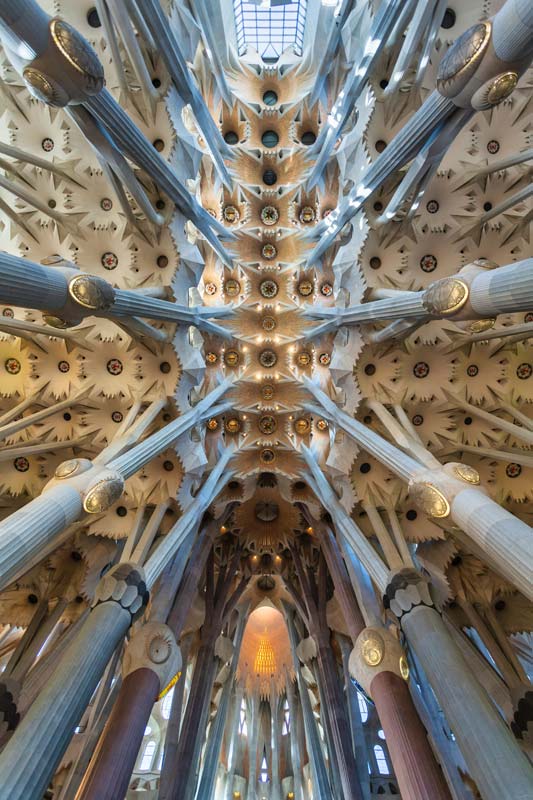
- animal kingdom - you will find them mainly in ornaments of facades. They are symbols good (lamb - a symbol of Christ, dove - a symbol of the holy spirit) and evil (reptiles, amphibians, snake with an apple).
- the kingdom of minerals - mainly represented by stained glass and glass lighting elements
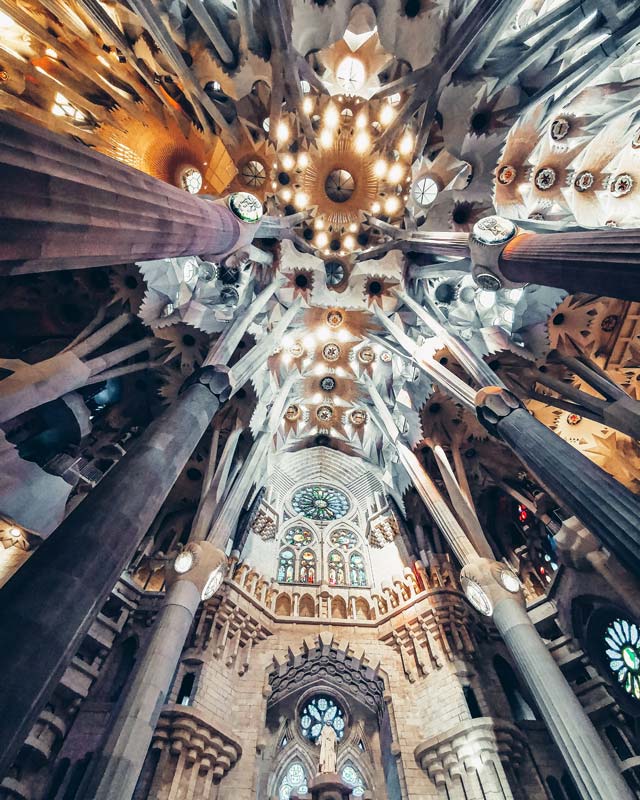
- human kingdom - the most expressive and poignant in meaning on the facade of the Passion, with naturalistic sculptures with sharp, almost geometric features
How to get to the Sagrada Familia?
Getting to the Sagrada Familia is very easy. Two metro lines stop here: L2 and L5. The metro stop at the cathedral has a surprising name: Sagrada Familia 🙂
In addition to the metro, several bus lines stop at the cathedral: 19, 33, 34, B24, D50, H10, LM5, N1 and N7.
Accommodation in Barcelona near the Sagrada Familia
Theoretically, finding an interesting accommodation in Barcelona should not be a problem, but in practice it is not always the case. At an attractive price, you can most often find hostels with rooms without a bathroom or dormitory rooms. Not everyone is happy with this. Hotels of a better standard, which we consider to be a normal standard on a daily basis, i.e. a typical double room with its own bathroom, unfortunately, are more expensive than in other cities. This is probably due to the popularity of Barcelona. Finding the right quality accommodation at a good price in Barcelona can be difficult.
Below are some suggestions that I found interesting. Perhaps you will like them or they will be a good starting point for further research. Click, search, choose!
Acta Antibes - [click]
Hotel Medicis - [click]
SM Hotel Sant Antoni - [click]
Important to me!
Give the article a good rating (5 stars welcome 😀)!It's free, a for me it is very important! The blog lives on visits and thus has a chance to develop. Please do it and ... thank you in advance!
If you like my guides, you will certainly find the one I created useful guide catalog - [click]. There you will find ready-made ideas for your next trips, descriptions of other tourist destinations and an alphabetical list of guides divided into countries, cities, islands and geographical regions.
I also post link to Facebook profile - [click]. Come in and press "Follow"then you will not miss new, inspiring posts.
Unless you prefer Instagram. I'm not a social media demon, but you can always count on something nice to look at on my instagram profile - [click]. The profile will gladly accept any follower who likes it.
I make the content I create available free of charge with copyright, and the blog survives from advertising and affiliate cooperation. So, automatic ads will be displayed in the content of the articles, and some links are affiliate links. This has no effect on the final price of the service or product, but I may earn a commission for displaying ads or following certain links. I only recommend services and products that I find good and helpful. Since the beginning of the blog's existence, I have not published any sponsored article.
Some of the readers who found the information here very helpful, sometimes ask me how you can support the blog? I do not run fundraisers or support programs (type: patronite, zrzutka or "buy coffee"). The best way is to use links. It costs you nothing, and support for the blog is self-generating.
Pozdrawiam

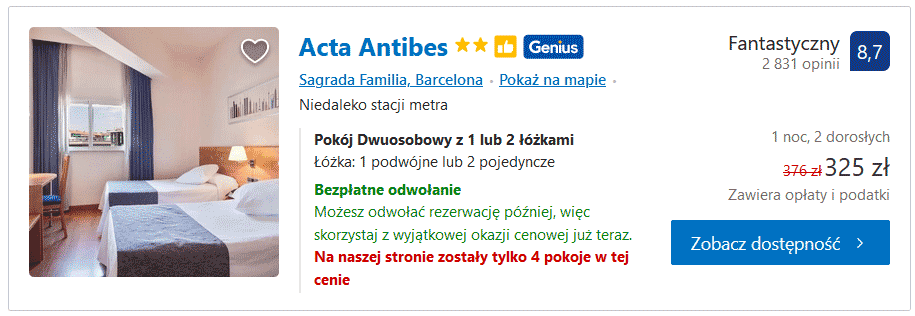


Great. Thank you, In May I was in Lisbon for the first time and I also used your advice. Regards. Darius
Thanks for a bunch of useful information :)
Now you just have to wait another 3 years for the construction to be completed and you will be able to admire it in all its glory.
We have been waiting for 140 years, so what do we have to wait a few more years 😉